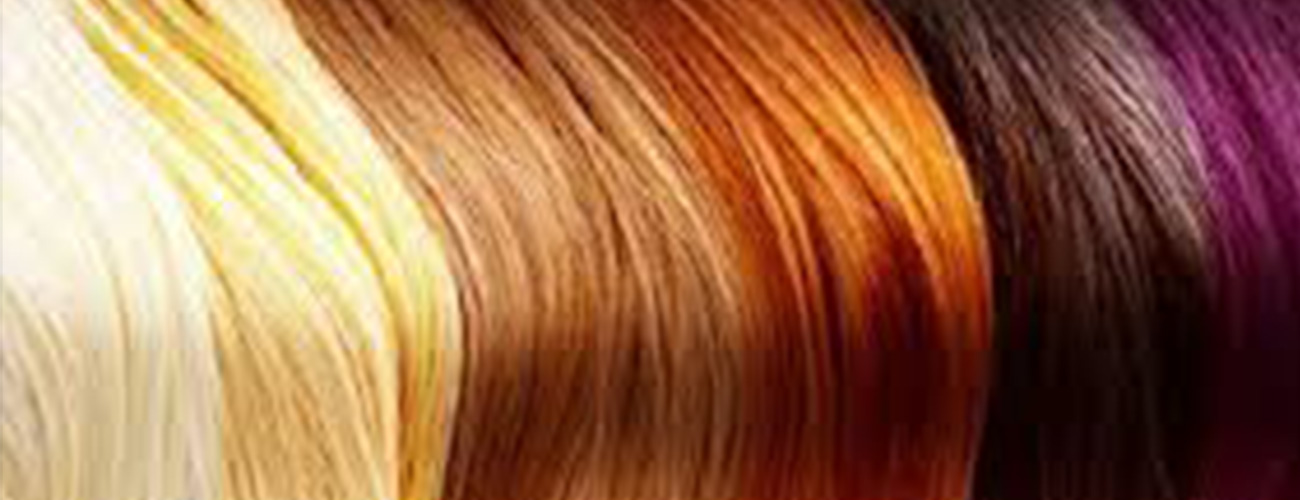
Introduction
Recently, there have been media reports of women who have experienced serious allergic reactions to hair dye.
It's important to be aware of this risk, and know what to do. Reactions to hair dye are avoidable if you follow some simple safety advice.
This page offers advice to anyone who uses permanent or semi-permanent hair dye, especially the darker-coloured dyes.
Why some people are sensitive to hair dye
Some people are prone to a skin reaction called contact dermatitis.
This means their skin becomes inflamed (red, dry and irritated) when they come into contact with a particular substance.
The substance may either be an irritant, directly damaging the skin, or an allergen, triggering an allergic reaction that affects the skin.
Many permanent and some semi-permanent hair dyes contain a chemical called paraphenylenediamine (PPD), which is a known irritant and allergen. This is the culprit of most reactions to hair dye
Is PPD safe?
Hair dyes containing PPD are safe to use, providing safety instructions are followed. These products are strictly regulated and there's a maximum limit to the amount of PPD the product can contain.
If you ignore the safety instructions that come with the dye, you could put yourself at risk of a serious reaction.
You're particularly at risk if you have (or have previously had) a black henna tattoo. These temporary tattoos should be avoided because the paste often contains toxic levels of PPD, which can sensitise you to the chemical. This means your immune system has "remembered" the chemical and will launch a defence reaction the next time you're exposed to it. So, you could develop a life-threatening allergic reaction when you next use PPD hair dye.
How to avoid a reaction to hair dye
Patch test
Always carry out a patch test before using a permanent or semi-permanent hair dye, even if you are using your regular brand.
This usually involves dabbing a small amount of the dye solution behind your ear or on your inner elbow and leaving it to dry. Follow the instructions that come with the dye.
If you develop any irritation or feel unwell after the patch test, don't use the product. You should be able to return the product to the shop for a full refund.
Allergy clinic
You could also have a patch test done at an allergy clinic, to see which chemicals (if any) you're sensitive to. You can then check product labels and avoid products containing these chemicals. However, the clinic may not test all hair dye chemicals.
Other precautions
If you don't develop any reaction from the patch test, you can continue to use the dye, but make sure you:
don't leave it on for longer than the recommended time
wear gloves when applying the dye
rinse your hair thoroughly afterwards
carefully follow the instructions included
Signs and symptoms of a hair dye reaction
Reactions to PPD can range from mild irritation in the scalp to an allergic reaction that can potentially trigger serious symptoms throughout the body.
Mild irritation
If you're mildly irritated to PPD, you may find that your scalp, neck, forehead, ears and/or eyelids become irritated and inflamed after using hair dye.
The skin exposed to the PPD may become red, swollen, blistered, dry, thickened and cracked. You may feel a burning or stinging sensation.
Symptoms will usually appear within 48 hours, although strong irritants may cause your skin to react immediately.
Allergic reaction
If you're allergic to PPD, your scalp and face may feel itchy and start to swell.
PPD may also trigger symptoms throughout your body, such as itching, a nettle rash, and generally feeling ill.
These symptoms may not develop until hours, or even days, later.
A severe allergic reaction that develops within minutes is known as anaphylaxis, or "anaphylactic shock". Signs of anaphylaxis include:
itchy skin or a raised, red skin rash
swollen eyes, lips, hands and feet – the eyelids can swell so much that the eyes close
feeling lightheaded or faint
swelling of the mouth, throat or tongue, which can cause breathing and swallowing difficulties
wheezing
tummy pain, nausea and vomiting
collapsing and becoming unconscious
What to do
Dial 999 for an ambulance if you think anaphylaxis is happening, and give an adrenaline injection if you have one.
If you think you're experiencing a reaction to hair dye, but it's not an emergency, follow this advice:
Relieving mild symptoms
Wash your hair and scalp thoroughly with mild shampoo to remove any excess dye
Try gently applying an emollient (moisturising treatment) such as aqueous cream to the affected skin
Steroid cream
If your skin is very red, sore and inflamed, you may need to try a steroid cream (topical corticosteroid). You can buy mild steroid cream over the counter (speak to your pharmacist for advice) or your GP can prescribe you one.
Read more about the treatment of contact dermatitis.
Avoiding PPD
If you develop a reaction to hair dye, even if it's just a mild one, you should stop using products containing PPD altogether, as there's a risk you could develop a more severe reaction in the future.
Submit Comment